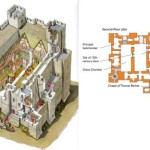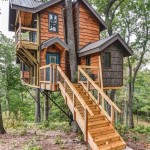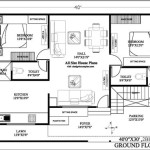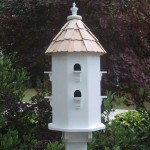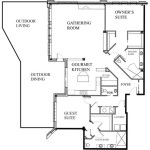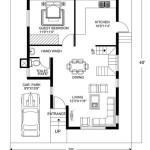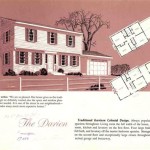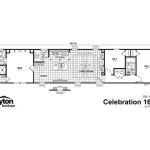House Plans For Back-Sloping Lots: Navigating the Grade
Building on a lot that slopes downwards from the street, known as a back-sloping lot, presents unique challenges and opportunities. Unlike level sites or front-sloping lots, back-sloping lots require careful consideration of drainage, accessibility, and structural integrity. Selecting the right house plan is crucial to maximize the potential of the property while minimizing construction costs and potential long-term maintenance issues. This article will explore various house plan options suitable for back-sloping lots, highlighting key design considerations and offering insights into maximizing the functionality and aesthetic appeal of a home built on this type of terrain.
The primary difference between building on a back-sloping lot versus a level lot is the need to work with the existing topography rather than against it. Traditional construction methods that rely on extensive excavation and grading can be costly and environmentally disruptive. Instead, effective house plans for back-sloping lots integrate the natural slope into the design, creating a harmonious relationship between the home and the landscape. This often involves utilizing the slope to create multi-level living spaces, maximizing natural light and ventilation, and minimizing the visual impact on the surrounding environment.
Before selecting a house plan, a thorough site analysis is essential. This analysis should include detailed topographical surveys, soil testing, and assessment of drainage patterns. The slope's degree, the soil composition, and the presence of any existing vegetation or water features will all influence the design and construction process. The site analysis will also determine the optimal placement of the house on the lot, taking into account factors such as solar orientation and views.
Choosing the Right Foundation Type
The foundation is arguably the most critical element of any home, but it is particularly important on a back-sloping lot. The foundation must be engineered to withstand the pressures exerted by the surrounding soil and to prevent water from entering the structure. Several foundation options are commonly used for back-sloping lots, each with its own advantages and disadvantages.
A walkout basement foundation is a highly popular choice for back-sloping lots. This type of foundation utilizes the slope of the land to create a basement level that is partially or fully exposed on the downhill side of the property. The exposed wall allows for the installation of windows and doors, transforming the basement into a functional living space with direct access to the outdoors. Walkout basements can significantly increase the usable square footage of the home without adding to the overall footprint, making them an attractive option for maximizing space and value. The downside to a walkout basement is the increased cost of excavation and the potential need for retaining walls to stabilize the surrounding soil.
A daylight basement is similar to a walkout basement but typically has less exposure on the downhill side. Daylight basements are often partially below grade, with smaller windows and less direct access to the outdoors. However, they still offer the advantage of additional living space and natural light, making them a viable option for lots with a gentler slope. The construction cost for a daylight basement is generally lower than for a walkout basement due to the reduced excavation requirements.
A pier and beam foundation is another option for back-sloping lots, particularly those with steep slopes or unstable soil conditions. This type of foundation consists of concrete or steel piers that are driven into the ground to support the weight of the house. The house is then built on top of the piers, creating a crawl space underneath. Pier and beam foundations are less invasive than basement foundations, as they require minimal excavation. They also allow for better air circulation and can be more resistant to flooding. However, pier and beam foundations may not be suitable for all soil types and can be more vulnerable to seismic activity.
A slab-on-grade foundation is generally not recommended for back-sloping lots, as it can be difficult to properly grade the site and ensure adequate drainage. However, in certain situations, a stepped slab foundation can be used, where the slab is built in sections at different elevations to accommodate the slope. This option requires careful engineering and is best suited for lots with a very gentle slope.
Designing for Accessibility and Drainage
Accessibility and drainage are two critical considerations when designing a house plan for a back-sloping lot. The slope of the land can create challenges for accessing the home, particularly for individuals with mobility issues. Proper drainage is essential to prevent water from accumulating around the foundation and causing structural damage.
Access to the home should be carefully planned to ensure ease of use for all occupants. This may involve incorporating ramps, stairs, or elevators into the design. The placement of the driveway and walkways should also be considered to minimize the distance required to travel up or down the slope. In some cases, it may be necessary to build retaining walls or terraced gardens to create level areas for walkways and outdoor living spaces.
Effective drainage is crucial to protect the foundation and prevent water damage. The site should be graded to direct water away from the house, and drainage systems such as French drains or swales should be installed to collect and redirect runoff. Gutters and downspouts should be properly sized and positioned to prevent water from pooling around the foundation. In areas with heavy rainfall, a sump pump may be necessary to remove excess water from the basement.
Retaining walls can serve multiple purposes on a back-sloping lot. They can create level areas for landscaping and outdoor living spaces, prevent soil erosion, and provide structural support for the foundation. Retaining walls should be designed by a qualified engineer to ensure they are strong enough to withstand the pressure of the surrounding soil. The material used for the retaining walls should be durable and aesthetically pleasing, complementing the overall design of the house and landscape.
Landscaping can also play a significant role in managing drainage on a back-sloping lot. Planting trees, shrubs, and ground cover can help to absorb rainwater and reduce runoff. Selecting plants that are adapted to the local climate and soil conditions is essential for their long-term health and viability.
Maximizing Views and Natural Light
Back-sloping lots often offer stunning views and the potential for abundant natural light. Designing a house plan that maximizes these assets can significantly enhance the living experience. Careful consideration should be given to the orientation of the house on the lot and the placement of windows and doors.
The orientation of the house should be optimized to take advantage of solar gain in the winter and minimize heat gain in the summer. In general, a south-facing orientation is ideal for maximizing solar gain, while an east-facing orientation is best for capturing morning sunlight. The placement of windows should also be carefully considered to maximize natural light and ventilation. Large windows should be strategically placed to capture views and bring natural light into the living spaces.
Skylights can be an excellent way to bring natural light into areas of the house that may not have access to windows. They can also help to improve ventilation and reduce the need for artificial lighting. However, skylights should be properly insulated to prevent heat loss in the winter and heat gain in the summer.
Outdoor living spaces such as decks, patios, and balconies can be integrated into the design to take advantage of the views and create a seamless connection between the indoor and outdoor environments. These spaces should be designed to provide shade and protection from the elements, allowing for year-round enjoyment. The layout and design of the outdoor living spaces should complement the overall aesthetic of the house and landscape.
In addition to maximizing views and natural light, the house plan should also consider the privacy of the occupants. The placement of windows and doors should be carefully considered to minimize views from neighboring properties. Landscaping can also be used to create privacy screens and buffer the house from the surrounding environment.
Building on a back-sloping lot requires careful planning and attention to detail. By selecting the right house plan and incorporating appropriate design considerations, it is possible to create a beautiful and functional home that takes full advantage of the unique opportunities presented by the site. A thorough site analysis, careful selection of the foundation type, attention to accessibility and drainage, and a focus on maximizing views and natural light are all essential elements of a successful design.

A Guide To Sloping Lot House Plans

Plan 85325ms 3 Bed Modern House For The Rear Sloping Lot Lake Plans

A Guide To Sloping Lot House Plans

Best Simple Sloped Lot House Plans And Hillside Cottage

Plan 64452sc House For A Rear Sloping Lot Architectural Design Plans Architecture

The Best House Plans For Sloped Lots And Narrow Houseplans Blog Com

House Plan Ch501

Duplex For A Down Sloping Lot 8188lb Architectural Designs House Plans

Sloped Lot House Plans Down Slope The Designers

Home Designs For Sloping Blocks Mark Lawler Architects

